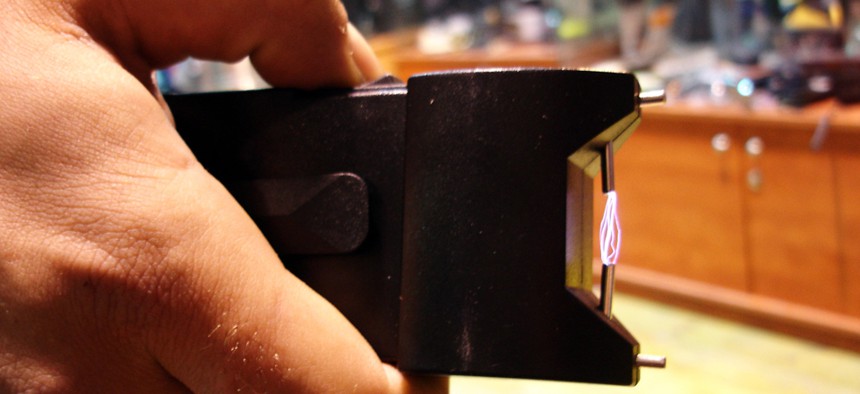Don't Tase Me CBP

ChameleonsEye/Shutterstock.com
The agency is shopping for stun guns, after guidelines stress limiting deadly force on trespassers.
U.S. Customs and Border Protection has begun shopping for stun guns, following a recent directive that stresses limiting the use of deadly force on trespassers.
Potential bulk buys are implied in a recent special notice for manufacturers requesting information on market availability and turnaround times for government orders.
Amid criticism about the use of excessive violence, Border Patrol Chief Michael Fisher on March 5 reiterated and issued new policies for his agents on safe tactics for stopping rock-throwers.
Among other things, Fisher directed Border Patrol supervisors to train officers on deploying alternatives to firearms in hostile situations, including "less-than-lethal equipment" and tire deflation devices.
Now, CBP officials are interested in fast deliveries of stun guns, according to the notice. They use euphemisms for tasers, such as "electronic control devices,” throughout the request for data.
Officials ask vendors how many "neuromuscular incapacitating projectile firing devices," batteries and cartridges could be produced solely for DHS "on a monthly basis." They also inquire about the lead-time for delivery once an order is in.
There is no indication of how soon officials plan to make purchases. Replies from manufacturers will help guide next steps, according to the notice. Companies have until April 9 to respond.
"Homeland Security intends to make industry a partner in all facets of the acquisition process, specifically by providing existing market capabilities, strengths and weaknesses for the acquisition of this commodity," CBP officials said.
While officials do not ask about the health impacts of the tools, the concern is implicit in a question about "human effects”: "Has independent human effects testing been conducted on your device? Please provide all references to the applicable human effects testing and research information regarding specific device technology."
Last year, a Miami Beach 18-year-old reportedly spray painting an empty building died after police shot him with a taser in the chest.
A 2013 Council of Canadian Academies study on the physiological impacts of "conducted energy weapons" – also known as stun guns – found that superficial puncture wounds are common side effects. The scant research on health issues suggests neuroendicrine, respiratory and cardiac effects could be fatal, although that would be extremely rare, according to the academies. Since 1998, at least 33 deaths in Canada have been associated with the devices, but were not necessarily directly caused by discharges.
Autopsies of tasered-individuals sometimes reveal preexisting health conditions or drugs in the body that could have factored into sudden death.
Immigrant rights groups complain that Border Patrol agents are "too trigger-happy” in responding to people who throw rocks at them along the U.S.-Mexico border, typically as a distraction to obscure drug smuggling," The Associated Press reported on March 8, after the deadly force policy adjustment.
Since 2010, agents threatened by individuals with rocks have killed 10 people, according to CBP. Fisher contended that “in the face of these dangers, Border Patrol agents continue to show exemplary restraint and professionalism.”
(Image via ChameleonsEye / Shutterstock.com)






